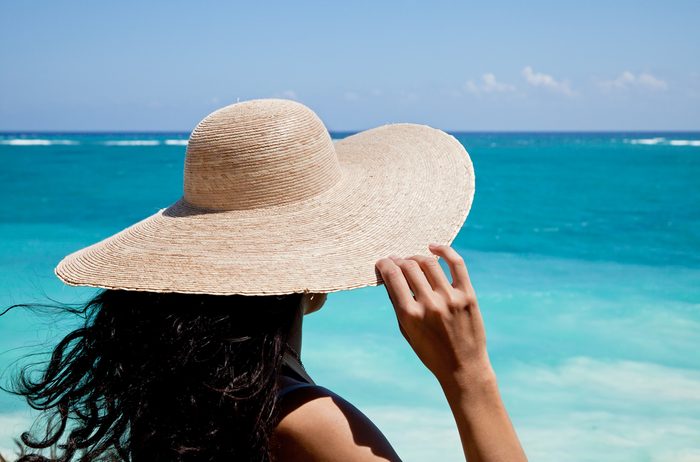
You stopped sweating
Sweating is your body’s way of regulating your temperature and cooling you down. If you’re not sweating after spending time in the sun and your skin feels hot and dry, you may be experiencing heat stroke, a potentially life-threatening condition which can cause damage to your organs and brain. Get out of the sun (preferably to a cool indoor space) and call for medical attention immediately. Sponge your skin with cool water and if ice packs are handy, apply them to your skin. These are sunscreen mistakes everyone makes.

You’re seeing wrinkles
Wrinkles are typically a sign of aging, but may also be a sign of collagen and fiber breakdown caused by overexposure to UV rays. If you’re worried about the onset of wrinkles, take precautions to limit sun exposure and diligently apply sunscreen or sun-blocking clothing when outside.
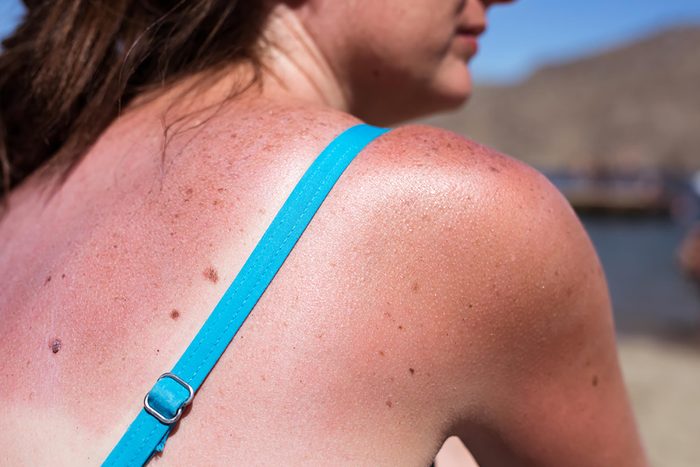
You have a rash
Heat rash occurs more often in children but can also be seen in adults. When sweat ducts under the skin trap perspiration, a rash can develop either in the form of blisters or red bumps. It most commonly appears in places where skin folds or as a result of tight clothing. Heat rash can be best treated by staying in a cool spot and keeping the affected area dry. Wear loose clothing to avoid further aggravating the rash. Eat these foods to protect your skin from sunburn.
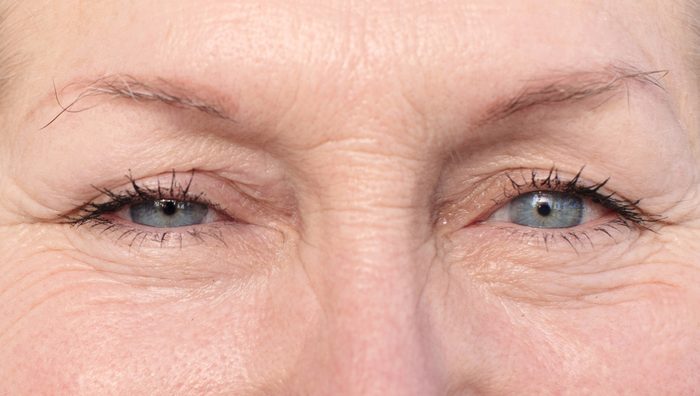
You’ve been diagnosed with cataracts
Cataracts occur as a result of UV damage to the eye. The majority of UV rays enter the eye through the lens. The lens can then become irritated or even burned, causing cataracts (or the clouding of the lens) to form. Cover your eyes with sunglasses when outside to protect lenses from UV damage.
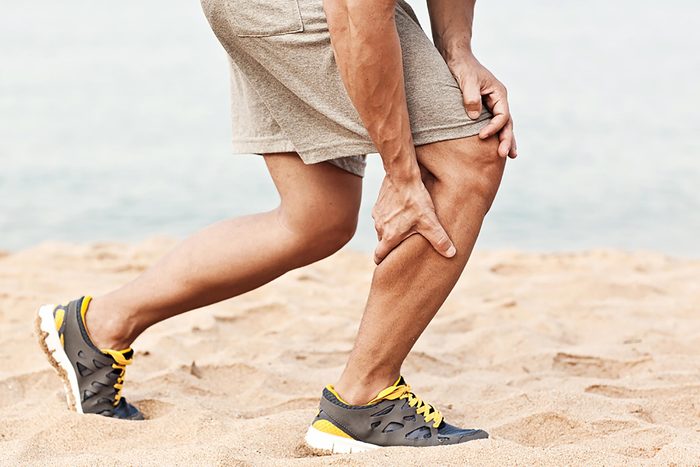
You have muscle pains or spasms
Sharp pains, spasms, or twitching while performing physical activity in the sun are typically a sign of heat cramps, which can be a symptom of heat exhaustion. Sweating in the sun may reduce your salt and hydration levels, which causes muscles to seize up when you exert effort. If heat cramps occur, sit in a cool, shady place and drink plenty of fluids. Wait several hours before resuming physical activity to avoid heat stroke. If your cramps do not subside after an hour, seek medical help. Plus, check out these weird ways the sun can affect your body.

You’re experiencing dizziness or confusion
Dizziness or confusion are both signs of heatstroke. Heatstroke is more serious than other conditions brought on by overexposure to heat, so if you suspect you or someone around you is showing symptoms of heatstroke, do not wait for symptoms to worsen but call for help immediately.

You feel fatigue or like you might faint
If you feel intense fatigue, dizziness, or have fainting spells when spending time in intense heat, you may be suffering from heat syncope. Heat syncope, or orthostatic dizziness, occurs when exposure to high temperatures reduces blood flow to the brain. Prolonged standing or moving from sitting to standing after having been static for an extended period can exacerbate the condition. Dehydration, which decreases overall blood volume, is also a major contributing factor. If you are experiencing heat syncope, get plenty of rest out of the sun and rehydrate your body with fluids and electrolytes. These are sneaky ways you might be making yourself dehydrated.
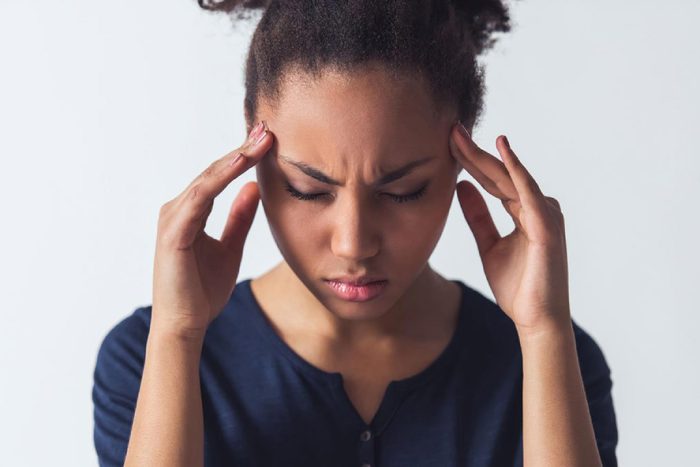
You have a headache or feel nauseous
A throbbing headache and nausea are also signs you’re experiencing heatstroke and indicate you should get medical help right away. Vomiting, rapid pulse and flushed, red skin are also serious indicators that you’re having heatstroke.
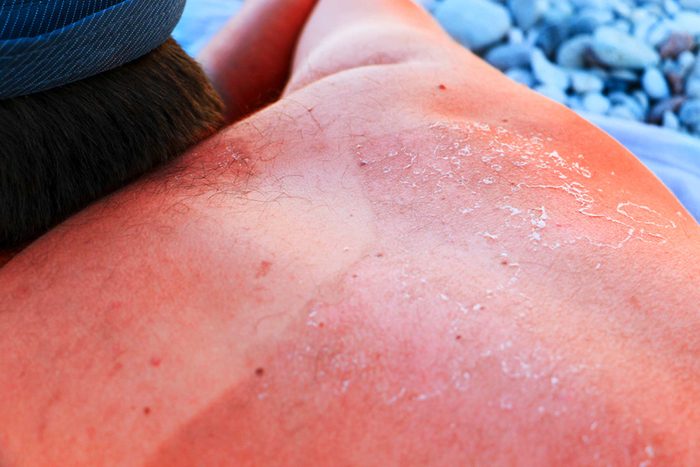
You have bumps or blisters
If your skin breaks out in itchy bumps or painful blisters in areas that have been exposed to sun, you may be experiencing sun poisoning, which is more severe than the typical sunburn. Other symptoms of sun poisoning include fever, chills, and nausea. If you’re experiencing these symptoms, see a doctor as soon as possible for treatment. Next, read about these sunburn myths that could be damaging your skin.